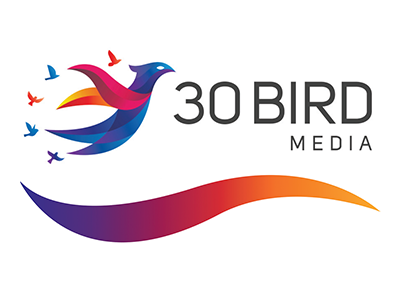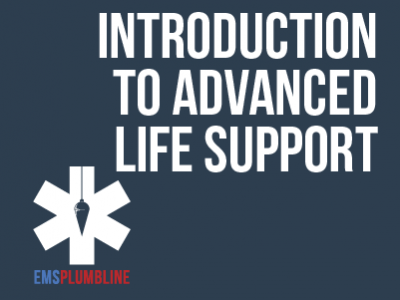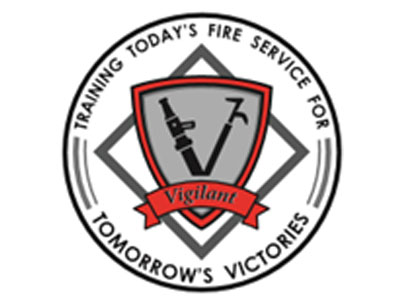 |
Microsoft Access 2019 Complete |
16.00 |
This course provides the basic and advanced concepts for the use of Microsoft Access 2019: How to navigate the Access interface; how to create and modify tables, queries, forms, and reports; how to create advanced queries, forms, and reports; how to create macros; and how to manage your databases.
You will benefit most from this course if you want to be an advanced user of Access 2019.
The course assumes you know how to use a computer, and that you're familiar with Microsoft Windows. It does not assume that you've used a different version of Access or another database system before. |
 |
Effective Presentations: Presentation Process |
1.00 |
This course will cover how to use a presentation process, prepare before making the presentation and overcome the fear of speaking, and deliver a presentation by using different aspects of voice. You will also learn how to use nonverbal communication aids. |
 |
Advanced Interpersonal Communication: Customers and Vendors |
0.50 |
Your customers include anyone who uses your company or organization to obtain goods and services. Customers might be internal or external. An internal customer is a member of your organization and can be a supervisor, colleague, or subordinate. An external customer is someone from outside your organization. Each customer is of equal importance, regardless of the amount of business that customer provides to your organization. You should provide the same level of quality goods and services all your customers, and all are equally deserving of efficient and effective communication.
In this course you will learn: to respond to customers’ complaints, and to reject a vendor’s contract without rejecting the vendor, and address a complaint to a vendor. |
 |
Employee Performance: Communication |
1.00 |
Communication is effective when a listener clearly understands a speaker’s message. Good communication fosters a productive exchange of ideas while minimizing the possibility of confusion or misunderstanding.
When trying to communicate with a difficult employee, you must be willing to work with that person to correct the problematic behavior. Openly discussing the behavior can help you find a mutually acceptable solution.
In this course you will learn to: communicate clearly and effectively by using verbal and nonverbal communication, and improve your listening skills, and communicate with difficult supervisors and coworkers, take a proactive approach when dealing with difficult employees, and identify types of employee dismissals. |
 |
Constructing: Sepsis for Paramedics, Part 2—Fluid Resuscitation |
1.00 |
If you think caring for sepsis patients is not an interesting topic, you might want to think again. Medical Directors Jeremy Cushman and Christopher Galton, give Paramedic Hoskins a passionate description of proper patient care. Fluids are important and this is why. Final Exam: This multiple choice exam is designed to test your knowledge of the material you just reviewed. You have two attempts to gain an 80% or higher on this exam. Please take your time and answer each question carefully. |
 |
Providing Homework Support: Types of Homework Support |
1.00 |
Research indicates there are many different ways to provide effective homework support in school-age programs. When planning a homework support program, it is important for school-age programs to develop a homework philosophy that is consistent with the program’s overall philosophy, and reflects current research on best practices for providing homework help. The homework philosophy should also reflect the needs of parents and children in the program, and strike a balance between homework needs and other experiences that help children grow and learn out-of-school. In this course, we will explore the various types of homework support. |
 |
Making Plans and Developing Policies |
2.00 |
Planning and policy-making are closely linked to the development of quality school-age care programs. When school-age staff are skilled as planners and policy-makers, they can use these skills to design and implement high quality programs that benefit children, youth, and families. It is essential for school-age care professionals to recognize that it is important for policies to grow out of a vision of quality, and a mission that supports that vision. Therefore, creating a vision for quality, developing a program philosophy, and writing a clear mission statement are the first steps in program planning. It is also important for school-age care professionals to use a systematic process to develop goals and objectives, set priorities for accomplishing goals and objectives, and develop goal-based action plans that will help the school-age program achieve its mission. High quality school-age programs are led by professionals who understand how to use effective strategies for creating a continuous cycle of planning and evaluation that supports ongoing program improvement. |
 |
Grammar Skills: Word Choice |
1.00 |
This course covers how to choose the appropriate words for clear communication and how to recognize and use frequently misused words correctly. You will also learn how to avoid common spelling errors and correctly attach prefixes and suffixes to words. |
 |
Computer Hardware Technician - Exam 220-1001 |
24.00 |
30 Bird's Computer Hardware Technician course provides the basic knowledge needed to install, configure, and support computer hardware and networking equipment. This includes:
- Assembling components based on customer requirements
- Installing, configuring and maintaining PCs and devices for end users
- Understanding the basics of network protocols and infrastructure
- Properly and safely diagnosing, resolving, and documenting common hardware and network issues
- Applying troubleshooting skills
- Understanding the basics of virtualization, desktop imaging, and deployment.
This course maps to the CompTIA A+ 220-1001 certification exam. Objective coverage is marked throughout the course.
This course assumes that you have basic computer knowledge. |
 |
Project Management Essentials: Activities and Dependencies |
0.75 |
This course will focus on how to identify project activities and recognize the types of project activities and the categories of dependencies and dependency relationships, analyze activities by creating an activity analysis form, and estimate the time duration and cost of project activities. |
 |
Advanced Interpersonal Communication: Organizational Culture |
1.34 |
An organizational culture is the personality of an organization. This personality is both determined and accepted by the organization’s members. For example, an organization might have a culture that is youthful, energetic, and fast-paced. In this type of culture, decisions are made quickly, and employees are empowered to take action in a wide variety of situations. Another organization might be more straight-laced and policy-oriented. This organization would be much more formal and serious in the way it does business. It is important to recognize and understand the culture of an organization, so that you can determine your fit with the organization.
In this course you will learn: to determine the nature of an organization’s culture, to use the cultural network to your advantage, and identify the characteristics of the roles exhibited in the network, to identify the elements of physical culture that affect interpersonal communication, and to identify the ways in which managers can build a positive culture. |
 |
Excellence in Service - Advanced: Service Teams |
1.50 |
This course will cover how to implement proper training and empower employees and motivate employees and reinforce desirable behavior in them. You will also learn how to build customer service teams and select the right employees and conduct an interview. |
 |
Preventing Violence at the Workplace - Retail |
0.50 |
This course addresses workplace violence, including its factors and types, and provides strategies for preventing it. |
 |
Lifting and Moving—Lesson 2 |
0.50 |
In the second session, we will discuss body mechanics and what you can do to properly train to perform in a safe manner. Final Exam: This multiple choice exam is designed to test your knowledge of the material you just reviewed. You have two attempts to gain an 80% or higher on this exam. Please take your time and answer each question carefully.
|
 |
Construction Safety & Prevention Program: OSHA Inspections |
0.50 |
This course covers the process of OSHA inspections, the penalties incurred when a workplace does not satisfy OSHA standards, and how to properly respond to an OSHA inspection. |
 |
Beginning a New Career |
0.50 |
In this course, you’ll learn some tips to determine what career is right for you, what to consider before changing careers, how to evaluate yourself as you consider a career, and more. |
 |
Interior Attack Operation #1121 (Instructor Guide) |
1.00 |
This is the instructor guide for the Interior Attack Operation Drill. This course will prepare the instructor to present and conduct this training session to an audience of firefighters. Course set-up requirements are described along with identification of key points and instruction for the demonstration and performance of the skill requirement of this training. |
 |
Time Management: Productivity |
0.75 |
This course will focus on how to increase productivity by controlling interruptions and meetings and recognize and overcome factors that adversely affect productivity. |
 |
Sales Management: Forecasting Sales Revenue |
0.50 |
This course will focus on identifying sales forecast factors and types of sales forecasts as well as discussing various types of forecasting approaches. |
 |
Basic Spanish Skills |
1.00 |
This course covers the basic conventions of the Spanish language. This course will help you learn how to use Spanish conversationally and in everyday life. In addition, you will learn how to use Spanish in times of emergency or specific situations. |
 |
Creating Community Collaborations |
2.00 |
Across the country, more and more communities are forming community collaborations to address the out-of-school needs of children and youth of all ages. When different segments of the community join together, share ideas, and pool their resources and efforts to create out-of-school time initiatives, children and youth benefit. What one organization or program may not be able to accomplish alone is often achievable when partnerships and collaborations among diverse groups and individuals are formed.
When school-age care professionals are knowledgeable about what it takes to create and sustain successful collaborations, they can play an important leadership role in creating out-of-school time initiatives and programs that will meet the needs of children and youth in their communities now and in the future. |
 |
Part-time Jobs |
0.50 |
A part-time job is one that involves working fewer hours than a full-time job in one week. This course will teach you some of the pros and cons of working part-time jobs, as well as things to keep in mind when considering this career choice. |
 |
Lemurs |
2.00 |
In this module, you'll learn about the natural history and conservation of a fascinating group of primates: lemurs. |
 |
Budgeting: Reviewing Budgets |
1.00 |
A typical budget contains information for a single year and is updated and revised periodically. Each company creates a budget that fits its unique needs. A budget can be used for many purposes, but its primary functions should be to support strategic goals and to help identify when actual results deviate from what was predicted. |
 |
Managerial Leadership: Defining Employee Roles and Priorities |
1.50 |
A vision is created by an organization to inspire its members to work together to reach for an ideal of what the organization can become. The members of the organization should use the vision as the standard to determine the day-to-day functions of their individual roles. The vision is the guide to use every time an action is taken, a decision is made, or a plan is developed to improve the organization or the people in it. An organization’s vision should enable the members in every role to do what is in the best interest of the organization.
In this course you will learn to: determine leader roles and strengthen employee roles, and align employee priorities and evaluate employee performance. |


























